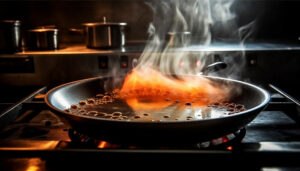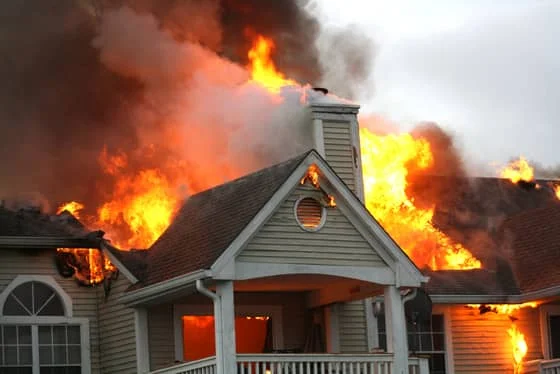Residential fires represent a significant danger to both human life and property, highlighting the importance of obtaining precise information regarding what causes most house fires. Although fire safety education is widely available, numerous individuals still maintain misconceptions that may foster a misleading sense of safety. These inaccuracies are not merely benign misunderstandings; they can lead to insufficient preventive actions, thereby elevating the risk of fires within homes. Understanding the causes is crucial to dispel these misconceptions and enhance overall fire safety.
This article confronts these commonly held misconceptions by offering clear insights and empowering readers with verified information. It is imperative to grasp the legitimate causes of house fires to devise appropriate safety protocols. Our aim is to invalidate prevalent myths and enhance your understanding, enabling the prevention of potentially disastrous occurrences. Through this dissemination of knowledge, we hope to encourage safer living spaces and lessen the likelihood of house fires.
Prevalent Myths About House Fires
Myth 1: Only old homes are at risk of fires
This belief is rooted from the idea that aged wiring and antiquated infrastructure are more prone to failures, which may result in fires. Nevertheless, the reality is that fires can happen in any residence, irrespective of its age, due to numerous factors.
Myth 2: Electrical fires are rare and only happen in winter
Many individuals perceive that electrical fires reach their highest frequency in winter, driven by the greater reliance on heating equipment. Nevertheless, electrical fires can emerge at any time, often stemming from faulty wiring, excessive circuit loads, or defective household appliances.
Myth 3: Cooking-related fires only happen in the kitchen
Many individuals mistakenly believe that cooking fires are restricted to the kitchen. In fact, grease fires can swiftly propagate to surrounding locations, and the use of portable cooking appliances can lead to fires occurring outside the typical kitchen context.
Factual Causes of House Fires
Cooking Incidents

Electrical Malfunctions
Ongoing inspections of electrical wiring and components are integral to reducing the risk of fires caused by electrical malfunctions. This process involves checking for frayed wires, defective outlets, or overloaded circuits that might pose fire threats. Additionally, engaging licensed electricians for both installations and repairs assures compliance with safety standards, effectively diminishing the risk of fire due to inadequate installation practices.
Heating Equipment
Space heaters and fireplaces can introduce major fire risks if used improperly. Concerns typically arise from the placement of flammable objects near these heat sources or from leaving them without supervision. Ensuring a safe distance between heating appliances and combustible materials is essential, as is the presence of an adult while they are operational. Additionally, consistent maintenance and inspections can enhance safety by ensuring these devices operate correctly and effectively.
Smoking and Open Flames
Inattentiveness in managing cigarettes and leaving candles without supervision are key contributors to household fires. It is vital to be cautious by ensuring that cigarettes are entirely extinguished before being discarded and by placing candles away from any flammable materials or breezes. Using resilient candle holders and keeping them on steady surfaces helps lessen the risk of them toppling over and igniting nearby objects. Implementing these safety guidelines can significantly mitigate the fire dangers related to smoking and flames.
Practical Fire Prevention Tips
Kitchen Safety Practices
Ensuring safety from kitchen fires requires an understanding of what causes most house fires, alongside constant attention while cooking and avoiding leaving the kitchen unattended. Recognizing common fire sources helps in keeping items susceptible to ignition, such as paper towels and cloths, away from heat sources like stoves. Furthermore, maintaining the cleanliness of cooking surfaces is crucial to control grease accumulation, which can easily lead to fires. By emphasizing these preventive measures, you can significantly reduce the risk of fires in the kitchen.
Electrical Safety Checks

Safe Use of Heating Devices
Adhere to the manufacturer’s guidelines when using space heaters and fireplaces to minimize fire hazards. It is essential to maintain a safe radius around these heat sources by keeping combustible materials away and supervising their usage carefully. Routine maintenance and compliance with safety advisories will enhance both safety and efficiency.
General Safety Measures
To enhance the safety of your home, understand what causes most house fires and actively install operational smoke detectors in crucial locations such as bedrooms and corridors. This knowledge is essential for determining the best locations for these detectors. Additionally, conducting monthly tests to confirm their proper functionality is recommended. Furthermore, create a comprehensive fire escape plan that includes all household members, and engage in regular practice to ensure everyone is familiar with the quickest and safest evacuation methods in the event of a fire. By understanding fire causes and implementing these proactive measures, you can greatly improve readiness and reduce the likelihood of fire-related injuries.
Conclusion
Understanding what causes most house fires and differentiating them from common myths is crucial for effective fire prevention. Awareness of actual risks—such as unattended cooking, electrical malfunctions, and improper use of heating devices—enables individuals to take targeted safety measures. This knowledge empowers homeowners to make informed decisions that directly contribute to reducing fire hazards and protecting their homes.
By adopting proactive fire safety practices, such as regular maintenance of electrical systems, adhering to kitchen and heating equipment guidelines, and implementing general safety measures like functional smoke alarms and practiced escape plans, households can significantly enhance their preparedness. These steps are fundamental in ensuring a safer living environment, thereby fostering peace of mind for everyone involved and preventing disastrous situations that may lead one to sell a fire-damaged house.

